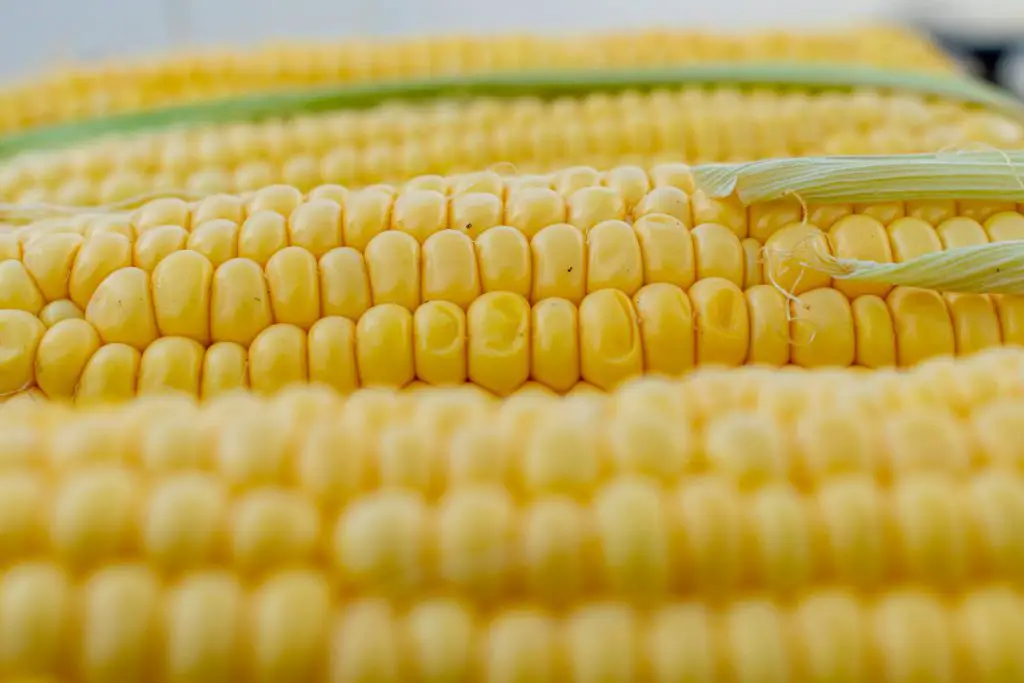Can All Corn Be Popped? Popcorn is a popular snack that is eaten around the world particularly, when watching movies, however, one of the most common questions that is asked is can all types of corn be popped. For example, can you take your leftover sweet corn kernels that are dried out and pop the kernels to create popcorn?
Unfortunately, popcorn kernels are a specific type of corn that contains moisture in the central part of the kernel, which when heated, converts to steam. The steam creates pressure within the corn kernel resulting in the popping of the husk. Not all varieties of corn have the ability to hold moisture within the centre of the kernel which is the key ingredient that makes popcorn pop.
So if you want to grow your own popcorn it needs to be a separate and specific crop to sweet corn, which is commonly grown by many gardeners at home. To get these seeds you need to look for varieties of corn that are specifically labelled as popcorn rather than sweet corn.
If you want to try out an interesting variety which is not well known the company seeds now stocks a variety called Strawberry Popcorn which has a red cob. To check out the website click on the link below.
How To Grow Your Own Popcorn At Home
Popcorn is a relatively easy crop to grow at home and can be treated much like standard sweet corn that many people grow in their own garden. To start the plant off most gardeners will plant corn into seed trays in the early part of the season as this will allow you to get popcorn earlier as corn is a frost-sensitive plant.
To start the seeds off start by filling the seed tray with good quality seed raising mix and firm it down into the individual cells to create solid plugs of soil. This is advantageous because it makes the transplanting of the seedlings quicker and easier and reduces root disturbance.
Once the soil is in place a single seed should be planted in each cell at a depth of approximately 1 inch then watered well and placed in a warm sunny location indoors. The seedlings will take approximately 7 to 10 days to appear and will typically need to spend around 6 weeks in the seed tray before the plant is large enough to plant out into the garden. During this period it is important to ensure that the seed tray remains moist to optimise the growth rate.
Once the seedlings have reached the height of approximately 4 inches or so they are typically large enough to plant out into the garden which can only be done once any risk of frost has passed.
When selecting a location within your garden it is important to choose a warm sunny location that gets at least 6 to 8 hours of sun a day and has rich moist and free-draining soil with plenty of nutrients. If you don’t have the best quality soil it is advisable to add an additional bag of compost before you plant the seedlings into the garden.

The seedling themselves should be planted approximately 1 ft apart in a grid structure rather than in long straight rows. The reason for this is that corn varieties are wind-pollinated rather than requiring insects to do the job. Planting in a block rather than a row increases the chances of the wind pushing the pollen onto the next plant.
As corn is a relatively tall crop it is common for many gardeners to mix it in with other types of vegetables to maximise the amount of food that you can get out of an individual space. The most common plants that are grown with corn are things like pumpkin, watermelon, cucumber, and rockmelon which all have trailing vines that will grow across the base of the garden bed. This is advantageous because it helps to retain moisture and also suppress weeds.
If you were considering adding a plant like this it is best to remove one of your corns from your planting grid and replace it with one of the vegetables mentioned above to ensure that you do not get overcrowding.
Once the popcorn has been placed in position there is little maintenance required other than to ensure that the bed remains weed-free and the plants get enough water throughout the season.

Harvesting Popcorn
Most varieties of popcorn will produce two ears of corn per stalk. The storks can be left on the plant until it begins to go brown and die back. At this point, the popcorn should be brought in and allowed dry completely.
The kernels on the cobs can be then snapped off to produce your popcorn which can be stored in jars until you are ready to use the popcorn in your own kitchen. However, to ensure that you do not have any issues with mould it is very important to make sure that the cobs are completely dry and do not have any moisture.
When growing popcorn, if you have selected an heirloom or open-pollinated variety rather than a hybrid seed, the kernels can also be collected as seed and used the following year to grow next year’s crop. The variety mentioned above that comes from seeds now is an heirloom variety that you can be collected and resown.
I hope you found this article useful and have great success growing popcorn at home. If you have any additional comments or questions please leave them section below.
Relevant Articles
Can You Plant Popcorn Seeds From The Store?
How Long Does It Take For Corn Seeds To Germinate? How Does Temperature Effect It?
Can You Harvest Corn More Than Once In A Season?
Is It Too Late To Plant Sweet Corn?

